Author Photo And Bio
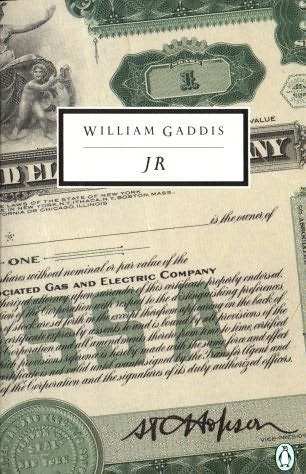 1. JR by William Gaddis (1975). This formally unique, dense, National Book Award–winning novel is composed almost entirely of dialogue and reads like a stream of conversation. This satire of high finance features an eleven-year-old named JR who uses a pay phone and mail order scheme to build a vast business empire on paper with the help of a partner, a struggling composer named Bast who serves as the company’s public face.
1. JR by William Gaddis (1975). This formally unique, dense, National Book Award–winning novel is composed almost entirely of dialogue and reads like a stream of conversation. This satire of high finance features an eleven-year-old named JR who uses a pay phone and mail order scheme to build a vast business empire on paper with the help of a partner, a struggling composer named Bast who serves as the company’s public face.
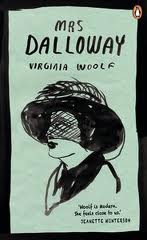 2. Mrs. Dalloway by Virginia Woolf (1925). This masterpiece of concision and interior monologue recounts events in the life of Clarissa Dalloway, a delicate, upper-class London wife and mother, as she prepares for a party at her home on a single day in June 1923. In a parallel subsidiary plot, a shell-shocked World War I veteran Clarissa encounters spirals into suicide rather than submit to soul-stealing experimental psycho therapy. The novel explores questions of time, memory, love, class, and life choices through Woolf’s intricate melding of points of view and powerful use of flashback.
2. Mrs. Dalloway by Virginia Woolf (1925). This masterpiece of concision and interior monologue recounts events in the life of Clarissa Dalloway, a delicate, upper-class London wife and mother, as she prepares for a party at her home on a single day in June 1923. In a parallel subsidiary plot, a shell-shocked World War I veteran Clarissa encounters spirals into suicide rather than submit to soul-stealing experimental psycho therapy. The novel explores questions of time, memory, love, class, and life choices through Woolf’s intricate melding of points of view and powerful use of flashback.
 3. Voyage of the ‘Dawn Treader’ by C. S. Lewis (1952). In this, the third book of The Chronicles of Narnia, King Caspian sets sail to the end of the world to rescue the seven lost lords of Narnia. Along with three English children —who have come to Narnia this time by stepping into a painting —and other companions such as the brave, sword-wielding mouse Reepicheep, Caspian has numerous adventures that resonate with Christian and classical mythology.
3. Voyage of the ‘Dawn Treader’ by C. S. Lewis (1952). In this, the third book of The Chronicles of Narnia, King Caspian sets sail to the end of the world to rescue the seven lost lords of Narnia. Along with three English children —who have come to Narnia this time by stepping into a painting —and other companions such as the brave, sword-wielding mouse Reepicheep, Caspian has numerous adventures that resonate with Christian and classical mythology.
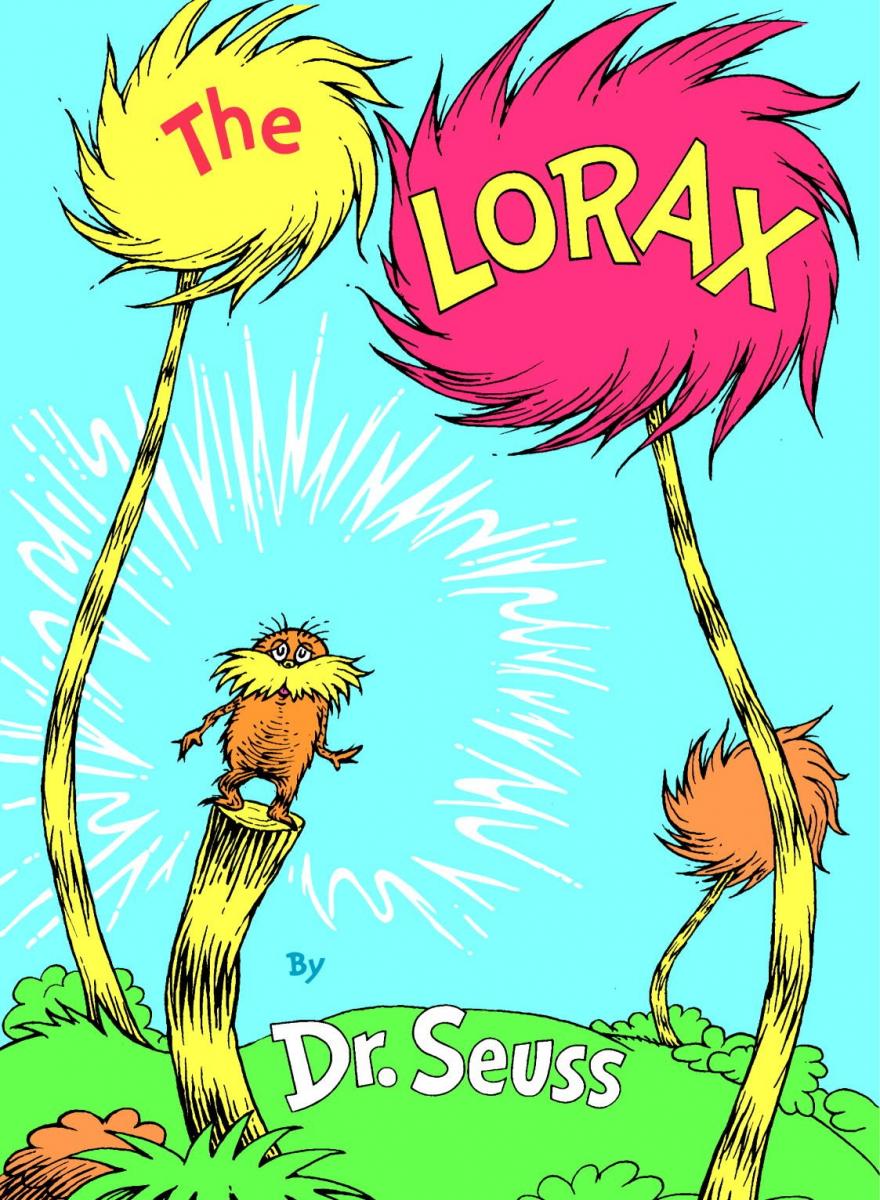 4. The Lorax by Dr. Seuss (1971). This picture book is a poignant environmental fable about a beautiful forest of Truffula trees destroyed for the sake of the mass production of curious garments called Thneeds. Long after the forest has been destroyed, the Once-ler who destroyed it comes out of his “Lerkim on top of his store” to tell this cautionary tale to children.
4. The Lorax by Dr. Seuss (1971). This picture book is a poignant environmental fable about a beautiful forest of Truffula trees destroyed for the sake of the mass production of curious garments called Thneeds. Long after the forest has been destroyed, the Once-ler who destroyed it comes out of his “Lerkim on top of his store” to tell this cautionary tale to children.
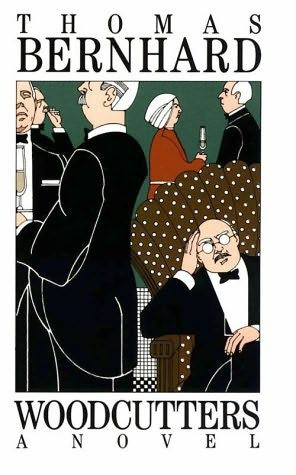 5. Woodcutters by Thomas Bernhard (1984). In this darkly humorous, hypnotically repetitious, stream of consciousness novel, an embittered and idealistic Austrian writer attends an “artistic” dinner party soon after the suicide of an old friend. With sharp psychological and emotional insight, Bernhard takes readers inside the mind of his narrator as he ruminates angrily on his hosts and their other guests, picking over his memories of his relationship with them and the dead woman.
5. Woodcutters by Thomas Bernhard (1984). In this darkly humorous, hypnotically repetitious, stream of consciousness novel, an embittered and idealistic Austrian writer attends an “artistic” dinner party soon after the suicide of an old friend. With sharp psychological and emotional insight, Bernhard takes readers inside the mind of his narrator as he ruminates angrily on his hosts and their other guests, picking over his memories of his relationship with them and the dead woman.
 6. The War with the Newts by Karel Capek (1936). This prescient and humorous Czech novel —part allegory, part satire, part science fiction romp —begins with the discovery of a new species of giant newt by a sea captain in an obscure tropical bay. Initially exploited for their pearl-harvesting abilities, the newts become the objects of scientific experimentation and then a massive global slave trade before they rise up and revolt, bringing humanity to its knees.
6. The War with the Newts by Karel Capek (1936). This prescient and humorous Czech novel —part allegory, part satire, part science fiction romp —begins with the discovery of a new species of giant newt by a sea captain in an obscure tropical bay. Initially exploited for their pearl-harvesting abilities, the newts become the objects of scientific experimentation and then a massive global slave trade before they rise up and revolt, bringing humanity to its knees.
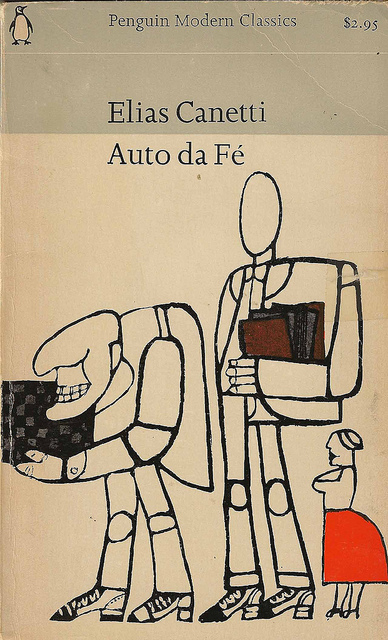 7. Auto-da-Fé by Elias Canetti (1935). Peter Kien, an obsessive collector who only feels comfortable in his world of books, is tricked into marriage by his conniving and much older housekeeper. Soon she forces him out of his own home and into the streets, where Kien spirals into madness, plotting how to save his books from his wife and employing a desperate chess-playing dwarf to help him “carry” his invisible library around with him.
7. Auto-da-Fé by Elias Canetti (1935). Peter Kien, an obsessive collector who only feels comfortable in his world of books, is tricked into marriage by his conniving and much older housekeeper. Soon she forces him out of his own home and into the streets, where Kien spirals into madness, plotting how to save his books from his wife and employing a desperate chess-playing dwarf to help him “carry” his invisible library around with him.
8. Red the Fiend by Gilbert Sorrentino (1995). (See Lydia's appreciation below.)
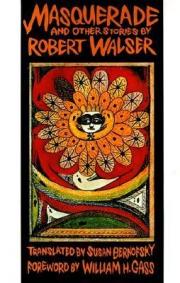 9. Masquerade and Other Stories by Robert Walser (1878–1956). Beloved of other writers but not known to a broad reading public in America, Walser was a formative influence on many writers, including Franz Kafka and Robert Musil. This collection of sixty-four short, sometimes essayistic, and always piercing stories published in the early twentieth century offers the Swiss writer’s take —meditatively, dreamily, truthfully, and often joyously —on subjects both microscopic and vast, from women’s gloves to medieval battles.
9. Masquerade and Other Stories by Robert Walser (1878–1956). Beloved of other writers but not known to a broad reading public in America, Walser was a formative influence on many writers, including Franz Kafka and Robert Musil. This collection of sixty-four short, sometimes essayistic, and always piercing stories published in the early twentieth century offers the Swiss writer’s take —meditatively, dreamily, truthfully, and often joyously —on subjects both microscopic and vast, from women’s gloves to medieval battles.
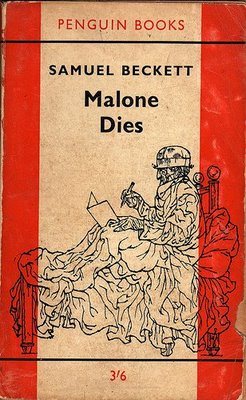 10. Molloy, Malone Dies, and The Unnamable, a trilogy by Samuel Beckett (1951–54). Like the runner’s high or Zen meditation, Beckett’s opus yields the transcendence that succeeds tedium and pain. The trilogy chronicles a descent into living death by three narrators: vagabond, cripple, misfit. These characters are by degrees banished from the landscape, stripped of their paltry possessions, thrown back on the scatological world of the body, and ultimately confined to the madhouse of their heads, where language alone sustains and betrays them. Beckett’s trademark black humor and the stubborn, paradoxical endurance of these voices lighten a terminally bleak vision.
10. Molloy, Malone Dies, and The Unnamable, a trilogy by Samuel Beckett (1951–54). Like the runner’s high or Zen meditation, Beckett’s opus yields the transcendence that succeeds tedium and pain. The trilogy chronicles a descent into living death by three narrators: vagabond, cripple, misfit. These characters are by degrees banished from the landscape, stripped of their paltry possessions, thrown back on the scatological world of the body, and ultimately confined to the madhouse of their heads, where language alone sustains and betrays them. Beckett’s trademark black humor and the stubborn, paradoxical endurance of these voices lighten a terminally bleak vision.
Appreciation of Gilbert Sorrentino’s Red the Fiend by Lydia Millet
Gilbert Sorrentino’s most accessible, straightforward, and flawless novel, Red the Fiend (1989), explores the practical and psychic tribulations of young Red. He’s a dirty urchin full of frustrated want and suppressed rage who lives in a working-class Brooklyn neighborhood (circa 1940) with his weak-willed mother and grandfather and, most important, his bitterly cruel, tyrannical grandmother. She makes his misery her first priority, calculating every move to maximize his exquisitely perfect emotional torment; for his part Red gradually learns to parry each of her sly thrusts with an equally sly one of his own. Eventually, he derives the lion’s share of his meager joy in life from the daily toil of returning her loathing and attempting to give as bad as he gets. In brutal simplicity, with recourse to uniquely effective listing devices, the precise and beautiful prose lays bare the excruciating particularities of Red’s pain and shame and makes palpably real his journey from, if not innocence, at least relative neutrality toward craftiness and deft manipulation. With the grace and rigor of thought and language that earned Sorrentino’s reputation as a master of stylistic play and cold humor, Red the Fiend describes in direct terms this increasingly dangerous battle of wills as it rises to its unbearable boiling point. No other novel in recent memory evokes the desolation of lovelessness with such blunt passion.